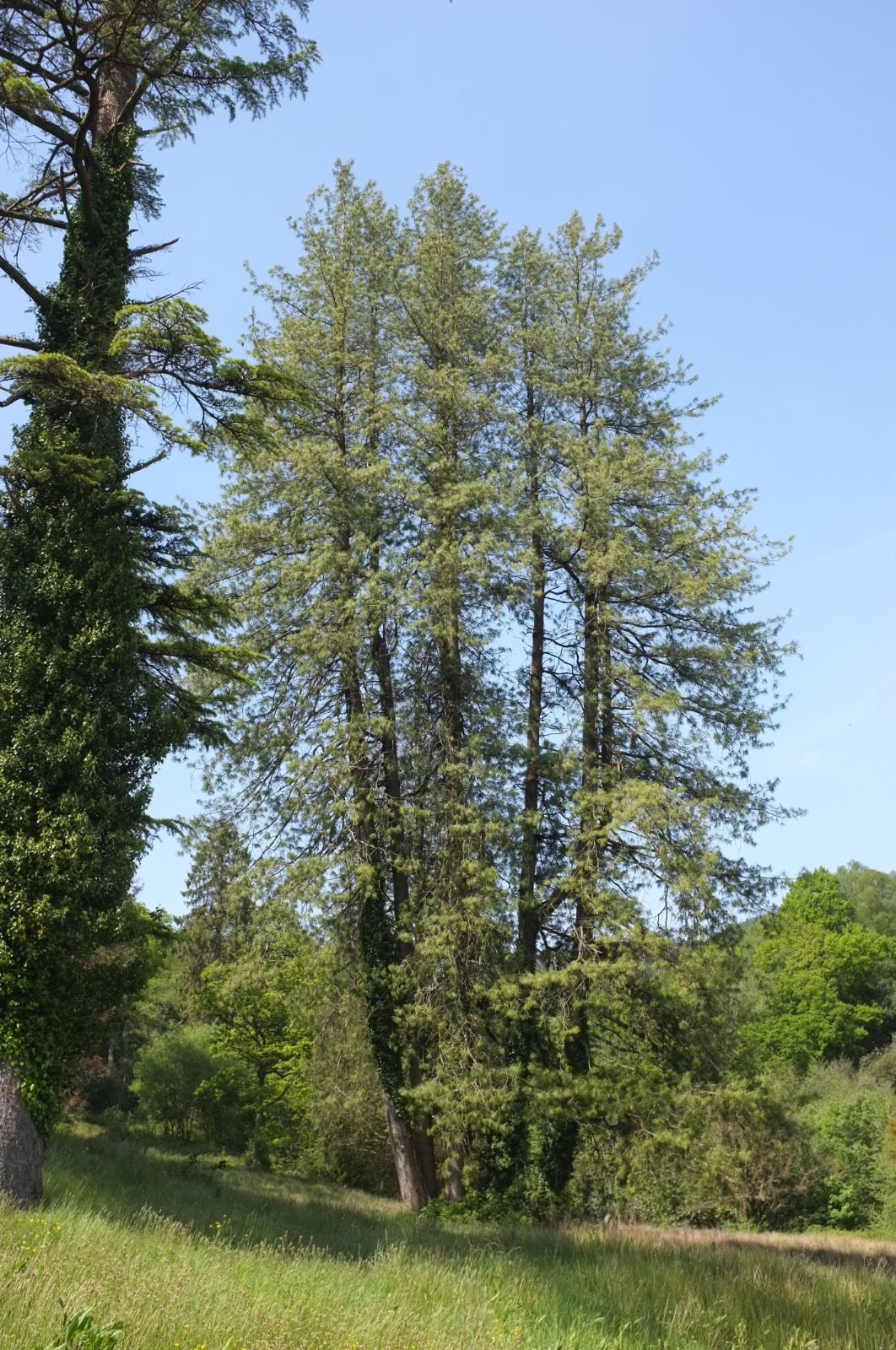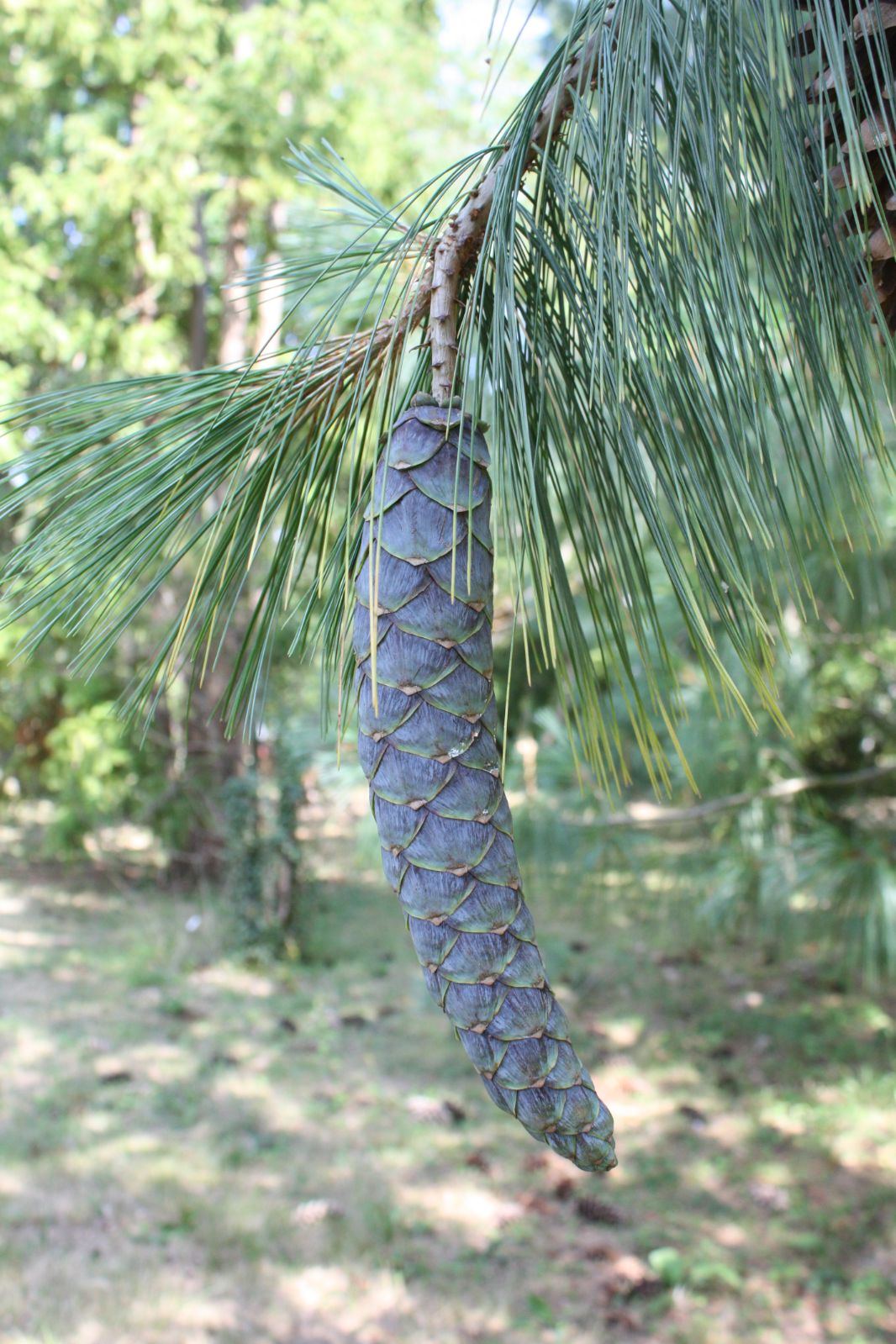Pinus wallichiana
Credits
Article from Bean's Trees and Shrubs Hardy in the British Isles
Recommended citation
'Pinus wallichiana' from the website Trees and Shrubs Online (treesandshrubsonline.
Genus
Common Names
- Himalayan Pine
- Bhutan Pine
- Blue Pine
Synonyms
- P. excelsa Wall. ex D. Don, not Lamb.
- P. griffithii McClelland, not Parl.
Other taxa in genus
- Pinus albicaulis
- Pinus arizonica
- Pinus armandii
- Pinus attenuata
- Pinus ayacahuite
- Pinus balfouriana
- Pinus banksiana
- Pinus bhutanica
- Pinus brutia
- Pinus bungeana
- Pinus canariensis
- Pinus cembra
- Pinus cembroides
- Pinus chiapensis
- Pinus contorta
- Pinus coulteri
- Pinus culminicola
- Pinus densata
- Pinus densiflora
- Pinus devoniana
- Pinus durangensis
- Pinus echinata
- Pinus edulis
- Pinus elliottii
- Pinus engelmannii
- Pinus eremitana
- Pinus flexilis
- Pinus gerardiana
- Pinus greggii
- Pinus × hakkodensis
- Pinus halepensis
- Pinus hartwegii
- Pinus heldreichii
- Pinus henryi
- Pinus × holfordiana
- Pinus hwangshanensis
- Pinus jeffreyi
- Pinus johannis
- Pinus koraiensis
- Pinus lambertiana
- Pinus leiophylla
- Pinus longaeva
- Pinus massoniana
- Pinus maximartinezii
- Pinus monophylla
- Pinus montezumae
- Pinus monticola
- Pinus morrisonicola
- Pinus mugo
- Pinus muricata
- Pinus nelsonii
- Pinus nigra
- Pinus oocarpa
- Pinus orizabensis
- Pinus palustris
- Pinus parviflora
- Pinus patula
- Pinus peuce
- Pinus pinaster
- Pinus pinceana
- Pinus pinea
- Pinus ponderosa
- Pinus pseudostrobus
- Pinus pumila
- Pinus pungens
- Pinus quadrifolia
- Pinus radiata
- Pinus remota
- Pinus resinosa
- Pinus rigida
- Pinus roxburghii
- Pinus sabiniana
- Pinus serotina
- Pinus sibirica
- Pinus strobiformis
- Pinus strobus
- Pinus sylvestris
- Pinus tabuliformis
- Pinus taeda
- Pinus taiwanensis
- Pinus teocote
- Pinus thunbergii
- Pinus torreyana
- Pinus virginiana
- Pinus wangii
- Pinus yunnanensis
A tree reaching 150 ft in height in the wild, and already over 100 ft high in cultivation; young shoots stout, blue-green, perfectly free from down, slightly ridged below each bundle of leaves towards the apex. Leaves in fives, falling the second and third years, 5 to 7 in. long, triangular in section, two faces white with stomatic lines, the third bright green, margins minutely toothed, sharply pointed; leaf-sheath 5⁄8 to 3⁄4 in. long, soon falling wholly away. The leaves are often bent abruptly near the base, so that the greater part of the leaf is pendulous. Cones at first cylindrical, 6 to 10 in. long, 11⁄2 to 13⁄4 in. wide, before opening, each on a stalk 1 to 2 in. long; scales 11⁄2 in. long, 1 in. wide, with a small, pointed, thickened apex.
Native of the Himalaya; introduced by A. B. Lambert in 1823. It is a handsome tree especially when of middle age, and grows with great rapidity when young, the leading shoot increasing by 2 to 3 ft. annually. It thrives best in a good sandy loam, and in a position sheltered from fierce gales, which give it a bedraggled appearance. Very hardy, and bearing cones early. It is only likely to be confused in gardens with P. armandii, and P. ayachahuite, both of which have more or less downy shoots and different cones. Its glabrous shoots, its five-clustered leaves and quickly falling leaf-sheath, distinguish it from all other pines except P. peuce (q.v.). The shoots of P. strobus may be almost without down, but they are slender and do not have the bluish tinge of P. wallichiana; also its leaves are shorter and do not droop.
P. wallichiana is a short-lived tree in cultivation; many of the oldest trees are decrepit, although planted only a century or slightly more ago. Its rapid growth when young is shown by a tree at Albury Park, Surrey, pl. 1921, 72 × 41⁄4 ft (1954), 93 × 51⁄2 ft (1968).
From the Supplement (Vol. V)
specimens: Albury Park, Surrey, pl. 1921, 98 × 6 ft (1973); Windsor Great Park, 78 × 133⁄4 ft (1979); Roches Arboretum, Sussex, 115 × 9 ft (1980); Hardwicke, Suffolk, 75 × 103⁄4 ft (1974); Abbeyleix, Co. Laois, Eire, 121 × 113⁄4 ft (1985).
† P. bhutanica Grierson, Long & Page – Near to P. wallichiana but with glaucous shoots covered in a fine, brownish down and with slender, glaucous needles which droop from the base and are on the average longer than in P. wallichiana, some almost 1 ft long. Native of Bhutan, described in 1980 (Notes Roy. Bot. Gard. Edin., Vol. 38, pp. 297–310).



